|
This isn’t my first story or review of wines from the diverse wine region of Alentejo. These expressive wines are impressive and never disappoint my palate. For those of you who are unfamiliar with the Alentejo wine region, here is a quick recap. Alentejo is situated in the southern half of Portugal and covers one-third of the country. This wine region is one of Portugal’s largest production areas. It is divided into eight sub-regions as seen on the map below. For the most part, Alentejo enjoys a typically Mediterranean climate with some Atlantic influence. However, the sub-region of Portalegre experiences much cooler temperatures due to its proximity to the mountains. The terrain throughout Alentejo is mostly flat with gently rolling hills, and the soil varies throughout its eight sub-regions. In fact, it has the most diverse soil of any region in Portugal. Interspersed amongst the mountains, hills, and valleys, one can find soil with clay, limestone, quartz, granite, schist, sandstone, and marble. Most of the soils are non-calcareous, meaning they are neutral or more acidic. Alentejo has 51,000 acres of planted vines that enjoy 3000 hours of sunshine annually. More than 80% of the grapes grown here are red, but whites are gaining momentum, especially Antão Vaz. The wines produced here come in a range of styles, influenced by the diversity of the climate and soil. For over 2000 years, blending has been a tradition for Alentejo winemakers. With over 250 indigenous grape varieties and 14 regional wine areas, Portugal rates as the highest density of native grapes per square mile in the entire world. Imagine the blending creativity winemakers have with all these varieties at hand. With so many grapes ripening at different times, winemakers have turned what might be considered a liability into an opportunity to create beautifully blended wines. Below are five samples of red blend-based wines from Alentejo. Herdade São Miguel Colheita Seleccionada Red 2017 This wine is produced by Casa Relvas located in the Evora sub-region. It is a blend of 50% Alicante Bouschet, 30% Touriga Nacional, 10% Syrah, and 10% Cabernet Sauvignon. 2017 was the third year of drought in Alentejo, but fortunately, due to the vines growing on clay and schist soil, they withstood the drought. Grapes are harvested in the evening when they are their most ripe. 50% of the wine was aged in French oak for four months. Lovely aromas of red and black fruits are inviting, with plum, raspberry, and spice thrown in. Aromas continue onto the palate with juicy dark cherry, blackberry, and a touch of herbs and earth. Bright acidity and firm tannins add to this beautifully blended wine. Alcohol: 13.5% SRP: $15 Adega De Borba Reserva Red 2015, DOC Alentejo Produced in the sub-region of Borba, this wine is a blend of 30% Trincadeira, 30% Alicante Bouschet, 20% Aragonez, and 20% Castelão. The grapes originate from old vines that grow in chalky-clay and schist. The blend is aged for 12 months in 3rd and 4th-year French oak and wooden barrels and another six months in the bottle. It opens with aromas that are reminiscent of rich dark jam, berries, and baking spice. The palate offers a wonderful balance of sweet and tart, with notes of sour cherry, plum, chocolate, and smooth tannins. Flavors linger on a long finish. Alcohol: 13.5% SRP: $18 Esporão Reserva Red 2016 Herdade Do Esporão first introduced this wine in 1985. It is a blend of Aragonez, Trincadeira, Cabernet Sauvignon, and Alicante Bouschet. Grapes are sourced from vineyards with soil of granite/schist origin and clay/loam structure. This wine is aged for 12 months in American oak (60%) and French oak (40%) barrels, and then an additional six months in the bottle. It begins with a rich bouquet of cherry, raspberry, blackberry, plum and baking spice. The palate is entertained with lush dark fruit jam, spice, and a hint of plum. Smooth tannins and a long berry finish add to the richness of this wine. Alcohol: 14.5% SRP: $24 Cartuxa, Tinto 2016, DOC Évora This is a historic winery with origins dating back to 1598. Carthusian monks who established the Santa Maria Scala Coeli Monastery were the first to make wine in Cartuxa. This wine is a blend of 40% Aragonez, 40% Alicante Bouschet and 20% Trincadeira. Grapes are sourced from vineyards with vines that average about 30-years of age, on soil of granite and schist. The wine is aged for 12 months in French oak barrels and then an additional nine months in the bottle. Heady aromas of floral, dark berries, earth, spice, and toasty notes segue onto the palate with a touch of cocoa. It is beautifully structured with fine tannins. Alcohol: 14% SRP: $25 Carmin Reguengos Garrafeira Dos Sócios 2014 Founded in 1971, the Cooperativa Agricola de Reguengos de Monsaraz is the largest winery in Alentejo. Vineyards for this elegant wine date back to the Middle Ages and surround the historic village of Monsaraz in the sub-region of Reguengos. 65% Alicante Bouschet, 20% Touriga Nacional and 15%Tinta Caiada make up the blend for this robust wine. It is aged for 14 months in French and American oak barrels. After aging, the wine is bottled and laid down for at least one year before release. This wine has a seductive bouquet of ripe plum, dark fruit, and spice that spills onto the palate. It is a richly textured wine with added notes of blackberry, black cherry, earth, and pepper. The finish is long and graceful, with smooth tannins and fine acidity.
Alcohol: 14.5% SRP: $48 All of these wines are beautiful blends representing the magic and artistry of the winemakers in Alentejo. The structure, complexity, and expressiveness are manifested in each bottle. Until next time… Cheers! Penina To leave a comment or if you have an inquiry, please contact me at [email protected] I am on the virtual road again, this time visiting Viña Ventisquero Winery with seven prime vineyards located throughout many of Chile’s wine regions. Gonzalo Val, President of Agrosuper, one of Chile’s largest agro-industrial companies, owns the winery. Founded in 1998, Ventisquero was first established in the Maipo Valley, which is one of Chile’s most important wine-producing regions. Since then, Ventisquero has expanded and diversified its holdings to include vineyards in Casablanca, Colchagua and Leyda Valleys and the Atacama Desert. Felipe Tosso, head winemaker, along with winemakers Alejandro Galaz and John Duval make up an adventurous team that endeavors to explore, experiment and make an exception to the rule when producing wine. Their main quest is to preserve and honor the origins, the earth and its fruit. Above photos are courtesy of Ventisquero. From left to right: Felipe Tosso, Alejandro Galaz and John Duval Some of you might be asking, “What is a single block wine?” A vineyard is usually divided up into blocks/parcels. A single block wine is made from a single variety that is sourced from a single block within a single vineyard. I recently received four bottles of Ventisquero Grey Line Single Block wines for review. I asked Felipe Tosso what the motivation was behind making single block wines. He replied, “The main vision for creating single block wines was to add more value to the concept of "origins" and uniqueness of our vineyards. We found in our vineyards certain blocks with unique characteristics. We delimited and isolated these vineyards and created unique wines for our Grey Line, a commitment to terroir and a wine that is outstanding. Our main goal at Ventisquero is always to express the concept of origin and our Grey Single Block line is exactly the expression of Maipo, Colchagua and Atacama.” Grey Line Single Block Carménère 2017 This 100% Carménère is sourced from Block 5 of the Trinidad Vineyard in the Coastal Maipo Valley. The vineyard has atypical soil, sandy-clay in origin. The wine was aged for 18 months in extra fine-grain French oak barrels and then further aged in the bottle for eight months. Tantalizing aromas of dark fruit, dark raspberry, spice and earth make their way onto the palate. Notes of plum, black cherry, pepper and a hint of baking spice add to its complexity with lush dark fruit lingering on a long finish. This is an elegant wine that is beautifully balanced with smooth tannins and fresh acidity. Pair with grilled meat, game, hearty stews and seared tuna. Alcohol: 13.5% SRP: $24 Grey Line Single Block Pinot Noir 2017 This wine is 100% Pinot Noir. Grapes are sourced from Block 22 in the Las Terrazas vineyard located only four miles from the Pacific Ocean in the Leyda Valley. The soil here is a combination of granite, red clay and granite rock. A maritime influence contributes to minerality in the wines. It is aged for 12 months in French oak barrels. Subtle floral aromas mix with red berries, sweet spice and sour cherry. The palate offers juicy plum, black raspberry, spice and mineral notes. Excellent acidity and soft tannins make this a very food-friendly wine. Enjoy with seafood, pasta, fowl, salads and cheese. Alcohol: 13.5% SRP: $24 Grey Line Single Block Cabernet Sauvignon 2014 This is a blend of 93% Cabernet Sauvignon, 4% Petit Verdot and 3% Cabernet Franc sourced from Block 38 in the Trinidad Vineyard of the Maipo Valley. Cool climate and granite soils contribute to this expressive wine. It was aged for 18 months in extra fine-grain French oak barrels. Delectable aromas of red fruit, dark berries, spice, earth and a hint of tobacco set the stage for this impressive wine. Intense flavors of red plum, red berries, spice, pepper and a touch of floral add to the character of this wine. It is nicely balanced with silky tannins and good acidity. Serve with aged cheese, grilled meat and hearty stews. Alcohol: 13.5% SRP: $24 Grey Line Single Block Garnacha Cariñena Mataro (GCM) 2017 Grapes for this wine were sourced from Block 28 in the La Roblería, Vineyard in Apalta sub-region of Colchagua Valley. The vineyard is a short distance from the River Tinguiririca, and benefits from the mesoclimate and stony-sandy, red clay soils. This typical Mediterranean-style blend is 62% Garnacha, 19% Cariñena and 19% Mataro. It is the only red wine blend in the Grey Line. The wine is aged in extra fine-grain French oak barrels for six months, followed by a minimum of one month in the bottle. Aromas of fresh red fruit, savory notes, strawberry, sour cherry and spice segue onto the palate with plum, red berries, herbs, spice and tobacco. A touch of minerality blends nicely with the acidity and smooth tannins, adding to the wine’s complexity. This wine was not filtered or clarified, so natural sediment may appear over time. The winemaker recommends decanting this wine for 30 minutes prior to serving. Enjoy as an aperitif or with aged cheese, grilled meat, chicken, or seared tuna.
Alcohol: 14% SRP: $24 The talented winemakers of Ventisquero have successfully bottled the Chilean terroir! These are expressive wines that capture the essence of the various vineyards and blocks they represent. I asked Felipe what goals in winemaking he might still be looking to achieve. Felipe said, “This December marks 20 years for me working at Ventisquero, a very important milestone in my career as a Winemaker. Throughout these 20 years, the winery has given me the liberty and the chance to experiment, propose, and create amazing wines. I am quite lucky for that. Having the chance to plant in terroirs so special and different such as the Atacama Desert, for example for TARA Wines, and in the altitudes of Apalta, passing through Maipo Valley, Leyda and Casablanca. Working with one of the most talented winemakers in the world, and my friend, John Duval, has been a great achievement and an amazing adventure for me. I think I have achieved all of my goals as a winemaker. For my years to come, I wish to keep making wines, which reflect our diverse and wonderful Chilean terroir in each and every bottle. My approach to winemaking will always be to reflect the places where these grapes were born.” Until next time… Cheers! Penina To leave a comment or if you have an inquiry, please contact me at [email protected] There is much to be said about the expressive wines of Alentejo. Over the last year or so, I have reviewed many Alentejo wines and written several stories about this diverse wine region. Today, my attention is directed to the Sustainability Program (WASP, Wines of Alentejo Sustainable Program) and five wines from producers who are active members in this program. Alentejo covers one-third of Portugal located in the southern half of the country and enjoys a typically Mediterranean climate with some Atlantic influence. The soil of Alentejo varies throughout its eight sub-regions. In fact, it has the most diverse soil of any region in Portugal. Interspersed amongst the mountains, hills and valleys, one can find soil with clay, limestone, quartz, granite, schist, sandstone and marble. Most of the soils are non-calcareous, meaning they are neutral or more acidic.
Alentejo has 51,000 acres of planted vines that enjoy 3000 hours of sunshine annually. More than 80% of the grapes grown here are red, but whites are gaining momentum, especially Antão Vaz. The wines produced here come in a range of styles, influenced by the diversity of the climate and soil. The Sustainability Program was launched in 2015 by CVRA (Comissão Vitivinicola Regional Alentejana). It’s objective is to reduce costs and increase economic viability through a proactive approach to environmental pressures and social concerns. Some of these initiatives include biodiversity and ecosystems, soil management, renewable energy and water conservation. In just five short years, the WASP program has established Alentejo as one of the world’s most progressive sustainability regions and is being recognized internationally for this award-winning program. WASP began with 96 members in 2015 and has grown to 396 members representing about 45% of Alentejo’s vineyard area. There are currently 1800 grape growers and 260 wineries in Alentejo. According to João Barroso, WASP Director of Sustainability, “Sustainability is the new paradigm of the 21st century. Producers who do not make sustainability a core part of their business model will become progressively outdated, side-lined by consumers and possibly through new intentional policies.” Each wine review ends with a “WASP Highlight”. Casa Relvas Sao Miguel Do Sul Red Blend 2018 A blend of Aragonez, Alicante Bouschet, Trincadeira and Cabernet Sauvignon. Ten percent of the wine is aged in French oak for six months. A bouquet of violet, red and dark fruit lead to a palate of dark berries, cherry and a touch of spice. This is a juicy wine with smooth tannins and fresh acidity. Alcohol: 14% SRP: $12 WASP Highlight: Casa Relvas uses sheep to control weeds during the vegetative rest period of the vineyard, reducing the need for hydrocarbon-dependent herbicides. Esporão Colheita Branco 2018 Harvested from certified organic vineyards, this wine is a blend of Antão Vaz, Viosinho, Alvarinho and a small amount of other grapes. This has refreshing aromas of grapefruit, lemon, and a touch of tropical fruit. A creamy palate (from four months spent on fine lees) blends nicely with tropical fruit flavors, peach and crisp acidity. Alcohol: 14% SRP: $16 WASP Highlight: Herdade do Esporão is one of Portugal’s most progressive wineries. They have led the way with a testing nursery to identify which indigenous grape varieties are best adapted to a changing climate. Herdade Dos Grous Red 2018 This is a nice blend of Aragonez, Alicante Bouschet, Touriga Nacional and Syrah that is aged for nine months in French oak barrels. Delicious aromas of ripe red fruit and spice segue onto the palate with dark cherry, plum and vanilla. Spice and cherry linger on a long finish. Alcohol: 13.5% SRP: $19 WASP Highlight: Herdade Dos Grous has reduced bottle weight across all their wines. Herdade De Coelheiros Coelheiros Red, 2017 This is a 50/50 blend of Aragonez and Alicante Bouschet. It is aged for 12 months in French oak barrels. A nice bouquet of red and black berries, spice and earthy notes envelop the nose. The palate offers blackberry, cherry, spice and pepper with a rich mouthfeel that is balanced with acidity. Alcohol: 14% SRP: $20 WASP Highlight: Herdade De Coelheiros uses bat shelters to encourage bats to make their home here – another natural approach to tackling unwanted insects in the vineyard. Carmim Reguengos Garrafeira Dos Sócios 2014 Alicante Bouschet, Touriga Nacional and Tinta Caiada make up the blend for this robust wine. It is aged for 14 months in French and American oak barrels. Lots of plum, dark fruit and spice greet the nose and segue onto the palate with added notes of blackberry, black cherry, pepper and anise. A perfect balance of acidity and fine tannins add to the lengthy finish. Alcohol: 14.5% SRP: $48 WASP Highlight: Carmim composts all organic waste from the winemaking process (grape pomace and lees) into fertilizer. New additions to the winery include the installation of rooftop solar panels, taking advantage of Alentejo’s abundant solar energy. All of these wines are well priced and very pleasing to the palate. And, for me, it’s a bonus that these producers are making wine with an emphasis on sustainability and moving toward organic farming. Bravo! Until next time... If you are looking for a red wine to go with summertime grilling, this red blend produced by Domaine Bousquet will definitely make your palate sing! Domaine Bousquet is Argentina’s largest exporter of organically grown wines. The winery is located in the Gualtallary Valley, which is situated high up in the Tupungato district of the Uco Valley. Altitudes here reach up to 5,249 ft. To read about the winery’s history, the climate, terroir and more, please click on the menu at right. The label on this wine is a striking portrayal of Gaia, who in Greek mythology was the mother goddess that presided over the earth. She is considered the personification of the Earth. Gaia Red Blend 2018 50% Malbec, 45% Syrah and 5% Cabernet Sauvignon make up this blend. The best grapes are used for this wine and are harvested manually from Domaine Bousquet’s organically farmed vineyards. Wine aging takes place in French oak barrels for ten months. Delectable aromas of dark berries, spice and violet are the opening act for this tantalizing wine. The palate is entertained with blackberry, dark cherry, dark plum, spices and a touch of vanilla all of which lingers on a lengthy finish. A silky mouthfeel and fresh acidity add to the richness and complexity of this wine. In addition to grilled meats, appetizers and pasta, this wine goes well with fish. Try Gaia with a chocolate dessert. It is a great finale! Alcohol: 14.5% SRP: $20 The wine paired beautifully with this grilled swordfish surrounded by red grapefruit and peaches. Note: The photos taken at the restaurant are pre-COVID-19.
Until next time… Cheers! Penina To leave a comment or if you have an inquiry, please contact me at [email protected] A few years ago I reviewed Hess Select Cabernet Sauvignon 2015 and Pinot Noir 2016. They were impressive wines with a lot of character at a very friendly price! So, I was delighted to receive new vintage releases of these memorable wines. For those of you who may have missed my story on Hess wines, here is a quick recap. Donald Hess is the founder of Hess Wines, a family-owned, fifth-generation company in Napa Valley, CA. In the 1970s, Donald made a business trip to Napa Valley and it was during this visit that he took an interest in mountain winegrowing. He learned that the Mount Veeder mountain vineyards were an ideal area for growing grapes, which produce unique character and flavor due to the microclimate and soils. In 1978 Donald made his first land purchase on Mount Veeder, a property in which winemaking and farming go back as far as 1876. This property is now the site of the Hess Collection Winery. By 1982, Donald had acquired 900 acres and in 1986 he opened the Hess Collection Winery to the public. Dave Guffy became Director of Winemaking in 1999 and Donald formally retired in 2011, passing on the baton to son-in-law Timothy Persson as CEO and daughter Sabrina, the fifth generation of the Hess family. Hess Wines focuses on sustainable farming practices and state of the art winemaking. In addition to its mountain vineyards, Hess Wines has estate vineyards in areas such as Pope Valley and near the Carneros region of the Napa Valley. They also produce wine in Argentina and South Africa. Hess Select Central Coast Pinot Noir 2018 The grapes for this 100% Pinot Noir are harvested from the Sarmento Vineyard in the Santa Lucia Highlands region of the Central Coast. Sarmento Vineyard is located on the benchlands of the Gabilan Mountains in Monterey, where the Pacific breezes cross the range each afternoon to cool the vineyards, resulting in extended ripening over a long, moderate growing season. (Benchland is a thin stretch of level ground at the foot of slopes or mountains.) Aging of this wine took place in French oak for up to 12 months. It opens with alluring aromas of berries, cherry, spice and vanilla. The palate offers lush layers of dark cherry, dark plum, raspberry and a lingering hint of baking spice and cherry. A beautiful marriage of silky tannins and acidity complete this irresistible Pinot Noir. Pair with grilled meat, fish, light pasta and appetizers. Alcohol: 14.5% SRP: $19 Hess Select North Coast Cabernet Sauvignon 2017 This is a blend of 79% Cabernet Sauvignon, 8% Petite Sirah, 7% Malbec, 5% Merlot and 1% Syrah. The grapes are harvested from the North Coast, which is known for its mild Mediterranean climate and well-drained volcanic and gravelly soils. These prime vineyard sites produce flavorful fruit with layers of natural acidity and balanced tannins. This wine is aged in 27% new French and American oak for 18 months. It has succulent aromas of dark berries, cherry, spice and earth. Mouthwatering flavors of rich dark fruit highlighted by plum and blackberry blend with spice, vanilla, clove and cocoa that linger on the palate. Pair this wine with grilled meat, BBQ fare, hearty fish, pasta and pizza. Alcohol: 13.5% SRP: $19 Both wines are perfect for year-round pouring and will pair beautifully with a myriad of cuisine!
Until next time… Cheers! Penina To leave a comment or if you have an inquiry, please contact me at [email protected] Women’s History Month begins on March 1st. Its purpose is to acknowledge and commemorate all the contributions either great or small that women have made throughout history and continue to do so. Taking only one month a year to celebrate women is not enough as far as I’m concerned. However, if during March we succeed in sharing enough stories, perhaps it will inspire and encourage younger generations that they too can overcome obstacles and aspire to become whoever and whatever they want to be. Within the global wine and spirits community, there is a multitude of women who have broken barriers and stepped into roles that were once dominated by men. Female winery owners and winemakers are no longer the “exception” and female distillers and master blenders are on the rise! The list of accomplished women is lengthy and impressive! Here are just a few examples of women who have helped to pave the way for others. Claudia Harris of England was the first female in the world to pass the rigorous Court of Master Sommeliers exam and receive a title in 1984. Madame Clicquot (Barbe-Nicole Ponsardin) became the proprietor of the famous champagne house in 1772 transforming it into the iconic winery Veuve Clicquot Ponsardin and earning her the title “Grande Dame of Champagne”. Joy Spence of Appleton Estate Jamaica Rum is the first woman in the spirits industry to hold the title of master blender in 1997. Heather Nelson is the first woman to found a whisky distillery in Scotland in over 200 years. She opened Toulvaddie Distillery Ltd. in 2015. I’m happy to say that the list is endless and I’m so proud of these women, past and present. Over the last several years, I’ve written about many rising stars and adept women in the wine and spirits industry, including the iconic Susana Balbo. After recently receiving two of her wines, it seemed fitting to begin Women’s History Month with Susana. Susana became Argentina’s first female enologist in 1981 and was undaunted by a male-centric arena. In the early 1980s while working at a winery in Salta she was the first to experiment with Torrontés, a much-overlooked grape variety. She made her first successful vintage of Torrontés in 1983. You can read a more detailed story about Susana, her winery and wines by clicking on this link or on the ‘Categories’ menu at right. http://thewineknitter.com/1/post/2017/08/day-592-susana-balbo-wines.html In addition to producing wine and creating her own winery in 1999, Susana was elected three times to serve as Presidency of Wines of Argentina and in 2015 she was elected to Argentina’s National Congress, representing the province of Mendoza. Susana is also a global leader and advocate for women’s advancement. In 2017 she became the first female to lead the W20 summit, which is an extension of the G-20 global group. Susana is a devoted mom and grandmother as well as a pioneer of Argentine wine, entrepreneur and she is dedicated to helping pave the way for women globally. So, let’s toast Susana with these remarkable wines! Susana Signature Brioso White Blend Valle de Uco 2018 This is a beautiful blend of 35% Semillón, 35% Sauvignon Blanc and 30% Torrontés. Grapes are hand-harvested from the high altitude vineyards of Finca La Delfina in the Uco Valley. The wine is aged four months in 60% first use French oak and 40% second use. White floral aromas, citrus notes, especially grapefruit, pear and hints of minerality set the stage for a refreshing palate of tropical fruit, citrus and creamy mouthfeel. A touch of minerality and floral linger on the finish. Drink as an aperitif or serve with fish, spicy cuisine and grilled vegetables. Alcohol: 13.5% SRP: $24 Susana Signature Brioso Red Blend Agrelo Mendoza 2017 This is a perfect blend of 41% Cabernet Sauvignon, 32% Malbec, 22% Cabernet Franc and 5% Petit Verdot. The grapes are hand-harvested from Agrelo in Luján de Cuyo at elevations of over 3,300 feet. The wine is aged for 15 months in 100% new French oak barrels. Delicious aromas of red and dark fruit, blueberry pie, floral and a touch of baking spice open to a complex palate of blackberry, blueberry, plum, espresso beans, bittersweet chocolate and a hint of anise and violet. This wine has great structure with smooth tannins and a long finish. It has great aging potential and I look forward to tasting it again in a few years. Serve with grilled meat, poultry, stews and hearty soups. On the back label of this bottle, Susana says, “Brioso means “a spirited love of challenge” and expresses my passionate drive to create a wine that reaches the pinnacle of quality.”
Alcohol: 14.5% SRP: $45 Let’s all share some inspiring stories in March and keep it going all year long. Let’s celebrate the women that have helped to open the door for future generations and us! Until next time… Cheers! Penina To leave a comment or if you have an inquiry, please contact me at [email protected] Today’s post is short, but I felt that this wine deserved extra attention rather than just giving a “shout out” on social media. If you haven’t yet read my story, “Two Cultures + Two Estates = Elegant Wines”, then please click on the link below to catch up and learn about Bodegas Caro and its very special wines. Trust me, it’s worth the four-minute read! http://thewineknitter.com/1/post/2020/01/two-cultures-two-estates-elegant-wines.html The first vintage that was born out of the collaboration between the Catena family and Domaines Barons de Rothschild was Bodegas CARO 2000. It’s success led to two more wines that I reviewed in the above story. After tasting and reviewing Amancaya and Aruma Malbec, I was delighted to recently receive a bottle of CARO and I must say, it was worth the wait! Bodegas CARO 2016 is a blend of 83% Cabernet Sauvignon and 17% Malbec. Grapes are selected and hand-harvested from the best blocks of the high altitude vineyards of Mendoza. This wine is aged for 18 months in French oak barrels from Lafite’s cooperage. It is a beautifully structured wine with deep ruby tones and aromas of dark berries, plum, spice and a hint of cedar. It takes your palate on a happy journey with layers of juicy dark fruit, plum, baking spice, anise and a lingering taste of sour cherry on a long finish. It is a perfect balance of acidity and tannins and it will only get better with age. And I look forward to tasting this vintage again in a few years. Serve with hearty meat dishes, stews and seared tuna.
Alcohol: 13.5% SRP: $64.99 Bodegas Caro wines are a stunning blend of two cultures, history and tradition that are poured into every bottle of wine produced. They are simply elegant! Until next time! Cheers! Penina To leave a comment or if you have an inquiry, please contact me at [email protected] If you are looking for expressive French wines that will please your palate, includes a vast range of styles, are food-friendly and won't put a dent in your wallet, then read on. Southwest France, (Sud-Ouest in French) is bordered by the Atlantic Ocean on the west, the massive Pyrénées Mountains and Spain to the south and Bordeaux to the north. It is the fifth-largest winegrowing region in France with 300 grape varieties of which 130 are native grapes. Add to that, over 120,000 acres of land of which 40,000 acres are vineyards, plus 42 geographical designations and you have an impressive wine region. Without going into too much detail, there are four sub-regions throughout the Southwest with varying types of climate, soil and grape varietals. Typical climates can range between temperate oceanic and continental depending on how close the vineyards are to the ocean or if located more inland. The soil composition also varies with clay-limestone, tawny sands and pebbles throughout most of the region. These diverse, terroir-driven wines derive their character and expression from these elements and therefore the winegrowers in Southwest are taking climate change very seriously. A major concern is that over the past few decades, dozens of native grape varieties have disappeared. Three progressive groups have formed throughout the region and they are actively tracking the existing grapes, looking for ways to adapt to global warming and reduce carbon footprint. Many winegrowers are practicing sustainability with organic and minimal interference in the vineyards. And some winemakers are studying the genetic makeup of ancient grape varieties in the hopes of creating newer versions of the grapes that can adapt to climate change and are resistant to disease. The sub-regions of the Southwest are: Bergerac & Dordogne River, Tarn-et-Garonne, Lot River, Pyrénées and IGP- Côte de Gascogne Within these sub-regions are many small villages and communal appellations that must adhere to the rules and regulations of AOP (Appellation d’Origine Protégée) or IGP for larger designated areas (Protected Geographical Indication). I recently received five Southwest France wines representing different sub-regions and appellations. In addition to the quality of these wines, the price range is an impressive range of $9 - $13! Domaine des Cassagnoles, Côtes de Gascogne 2018 IGP Depending on the vintage, this wine is typically Colombard dominant with Ugni Blanc and Gros Manseng grapes. The wine is aged in tanks until bottling. A floral bouquet leads to a crisp wine that is nicely balanced between fruit and acidity. Stone fruit, minerality, green apples and a hint of lime entertain the palate. Drink as an aperitif or serve with light appetizers, fish and light pasta. Alcohol: 12.5% SRP: $10 Château Lastours, Gaillac 2016 AOP This wine is a blend of 30% Syrah, 30% Braucol, 20% Merlot and 20% Cabernet Sauvignon. It is aged in tanks for 2 to 3 years. The wine is deliciously juicy with ripe red berries, spice and soft tannins. Serve with grilled or roasted meats, poultry, casseroles and cheese. Alcohol: 13% SRP: $10 Vinovalie, L’infini Malbec Cahors 2016 AOP This wine is 100% Malbec. It has lovely aromas of dark fruit and spice that spill onto the palate with juicy blackberry, blueberry and plum. The wine is nicely balanced with soft tannins. Vanilla, toasted nuts and pepper linger on the finish. Serve with grilled meat, chicken and hearty stews. Alcohol: 13.5% SRP: $9 Château Tour Des Gendres, Bergerac 2016 AOP This wine is a blend of 60% Merlot and 40% Malbec. Raspberry, cherry and sweet spice aromas lead to a palate of juicy black cherry, plum and spice. This is a beautifully structured wine that will pair well with roasted meat, game, hearty stews and aged cheese. Alcohol: 13.5% SRP: $13 Famille Laplace, Madiran Laplace 2016 AOP This is a blend of 70% Tannat and 30% Cabernet Franc. Although Tannat tends to be quite tannic, this wine is rich and surprisingly smooth. Lots of juicy dark fruit and acidity blend perfectly with hints of violet and spice. Pepper, vanilla and a hint of anise linger on a long finish. This wine will pair nicely with roasted red meat, white meat, stews and risotto. Alcohol: 13.5% SRP: $13 I had to pinch myself a few times and reread my notes on the prices for these wines to make sure that I hadn’t transposed the numbers. Not only are the wines engaging and expressive, but the price to value ratio has left me speechless! No wonder that cases, as opposed to bottles, are being sold. I think it’s time to explore more of these delectable wines from Southwest France!
Until next time... Cheers! Penny To leave a comment or if you have an inquiry, please contact me at [email protected] It began in 1999 with the birth of a partnership between Domaines Barons de Rothschild (Lafite) and the Catena family of Mendoza. Their mission was to produce a wine that would combine French and Argentine cultures. Baron Eric de Rothschild described it as, “An association between two cultures, two families and two noble grapes.” Bodegas Caro was born and the two signature grapes of each producer, Malbec and Cabernet Sauvignon became the focus of their endeavors. Together, these families have combined their knowledge and expertise to produce elegant wines. The Catena family, who has produced wine for four generations, contributed their knowledge of the high altitude terroirs of the Mendoza region and to find the best vineyards for Malbec. Domaines Barons de Rothschild contributed their knowledge and centuries-old skills in growing, vinifying and aging Cabernet Sauvignon. DBR also imparted the art of blending different grape varieties to produce one great wine. The first vintage in 2000, called CARO, was a success and led to the creation of Amancaya in 2003, a Malbec dominated cuvée. Aruma Malbec (100%) was introduced with the 2010 vintage. The vineyards are located in two zones in Mendoza. The first zone is in Luján de Cuyo and Maipú. This zone is noted to be among the best in Argentina for making wines. The altitude range is 2625 ft. to 2953 ft. with average temperatures of 46 to 73 degrees. The second zone is in the Uco Valley in Tunuyán, Tupungato and San Carlos. The altitude range is 3280 ft. to 5250 ft. with average temperatures of 44 degrees to 71 degrees. The high elevations in these zones are beneficial to the grapes due to the high daytime temperatures and cooler nights. This diurnal temperature variation contributes to slowing the ripening process, extending the growing season and allowing the grapes time to produce balanced sugar and acidity. All of the grapes are handpicked and hand-sorted before de-stemming and vinification to make sure that only the best grapes are used. Each vintage is aged in oak barrels, 18 months for CARO and 12 months for Amancaya. Most of the barrels are made at the DBR’s cooperage in Bordeaux. Aruma Malbec is aged in tanks to preserve the fruit-driven style and to allow the varietal characteristics of the grape to come through. Overseeing all of this is Philippe Rolet, Estate Manager and winemaker who joined Bodegas Caro in January 2019. Philippe was born in Jura, France into a family-owned winery, Domaine Rolet. He began his career at Domaine William Fèvre and went on to work with many prestigious wineries in Argentina, Chile and France before becoming estate manager for Bodegas Caro. I asked Philippe what his biggest challenge was in the vineyards and presumed he might speak about springtime frost and summertime hail that are common threats in high altitude vineyards. I was not expecting the following answer! "The biggest challenge we face in the vineyard is living together with ants. The vineyards in Mendoza are located in a semi-desert climate. In this environment, apart from vineyards, leaves are rare. Our vineyards are in transition for organic management. We do not use pesticides or insecticides. Therefore, ants can be very damaging, destroying young shoots and leaves in springtime, thus, reducing crops and also killing vines. Ants are part of our biodiversity. Our actual challenge is offering them something more appetizing than our vine leaves. Native flowers appear as a good alternative. We actually investigated the right native species to plant within our vineyards." After doing a little reading, I learned that ants are indeed an issue in many vineyards of Argentina. I am quite happy that Philippe and his team were able to solve their ant problem and my palate is especially pleased. I recently had the opportunity to taste two of the estate wines and I was duly impressed by their quality and expression. Bodegas Caro Amancaya Reserve Red Blend 2017
This is a blend of 72% Malbec and 28% Cabernet Sauvignon. The grapes were handpicked from vines over 30 years old. Aging took place for 12 months with 50% in French oak barrels and 50% in concrete vats. This ruby-red wine is filled with aromas of cherry, raspberry and baking spice. The palate is layered with lush fruit of ripe cherries and plum followed by spice and slight oak integration. A hint of cocoa and anise linger on the finish with soft tannins. This is a beautiful blend of Cabernet Sauvignon and Malbec that clearly shows off the marriage of Argentinian and Bordeaux styles. This wine is named after Amancaya, a mountain flower that grows in the Andes. Alcohol: 14% SRP $70.99 Bodegas Caro Aruma Malbec 2017 This wine is 100% Malbec. As previously noted, the grapes are handpicked and the wine is aged in tanks. The color is dark ruby with intense aromas of floral, red fruit and a hint of herbs. An array of juicy and fruit-driven flavors greet the palate with cherry, blackberry and spice. This is a graceful wine with a harmonious balance between tannins, acidity and alcohol. “Aruma” means “night” in the Quechua language. The name was chosen for “the intense darkness of the nights in the Andes and the pure mountain air that give the wines the rich, authentic character of their terroir.” Alcohol: 13.5% SRP: $70.99 Both wines will pair well with appetizers, grilled meat, stews, hearty pasta and fatty fish such as grilled tuna. These wines are a treat to drink and priced well. I’m looking forward to tasting CARO in the next few weeks and sharing my thoughts with you. Until then… Cheers! Penina To leave a comment or if you have an inquiry, please contact me at [email protected] Hopefully, by now you are familiar with Domaine Bousquet after reading several of my stories and numerous reviews of their wines. And perhaps you have a bottle or two in your wine cellar! Domaine Bousquet is located in the upper reaches of the Gualtallary Valley in Tupungato, part of Mendoza’s Uco Valley in Argentina. Sitting at an altitude of 4,000 feet, it is considered one of the highest altitude vineyards in Mendoza and in the world! Noted for their use of French and Argentinian winemaking techniques, Anne Bousquet stated, “The objective of the Bousquet family was to unite our tradition of European winemaking with the ideal agricultural conditions in Mendoza.” If you are not familiar with the Bousquet family history, the estate and its terroir, please click on the links below. Day 622 Bonjour Argentina! - The WineKnitter http://thewineknitter.com/1/post/2018/01/day-622-bonjour-argentina.html Day 626 Bonjour Argentina! Part Two - The WineKnitter http://thewineknitter.com/1/post/2018/02/day-626-bonjour-argentina-part-two.html All of Domaine Bousquet wines are made from 100% organic fruit since the first vines were planted in 1997. Special attention is always taken to preserve the purity of the organic fruit. Sulfites occur naturally in grapes, but winemakers add additional sulfites to wine as a preservative. The sulfites help to maintain the wine’s freshness and slow down oxidation. With the release of Domaine Bousquet’s Virgen 2018, it marks their first no-sulfites-added, USDA certified organic red blend. Anne Bousquet said, “We only tackled this project once we were confident that we could manage the challenges of making a top-notch organic wine. We also wanted to make sure that this wine was true to our house style: an elegant wine with bright, clean, fruit flavors.” Domaine Bousquet Virgen Organic Red Blend 2018 is made with estate-grown 35% Malbec, 35% Cabernet Sauvignon and 30% Cabernet Franc. As with all grapes from the estate, they are manually harvested. The three grape varieties were fermented together, no oak was used and no sulfites were added allowing for the “purest expression of the terroir.” This wine is deep purple with intoxicating aromas of ripe red fruit, dark berries, violets and spice. A richly layered palate is filled with juicy blackberries, black raspberry, blueberries, floral, spice and anise. The alcohol and acidity are perfectly balanced with fruit and anise lingering on a lengthy finish. This is a “drink now” wine. Pair with hearty stews, grilled meat, fowl and pasta. Alcohol: 15.5% SRP: $13 In addition to the Virgen Red Blend, I opened Domaine Bousquet’s Premium Cabernet Sauvignon. The premium varietal series is usually a blend of estate and purchased fruit from the Uco Valley. Premium Varietal Series Cabernet Sauvignon 2018 is 100% Cabernet Sauvignon made from 100% organic fruit manually harvested from estate vineyards. This wine is un-oaked. An inky purple color leads to aromas of dark berries, black plum, floral and spice. The palate offers a mix of berries infused with dark cherry, plum, spice, licorice and a touch of pepper and violets on the finish. This is a smooth wine with just the right balance of tannins and acidity. Pair with aged cheese, grilled meat, veggies and hearty soups. Alcohol: 14% SRP: $13 Domaine Bousquet wines never disappoint my palate and they are offered at an amazing price!
Until next time… Cheers! Penina To leave a comment or if you have an inquiry, please contact me at [email protected] |
Categories
All
|

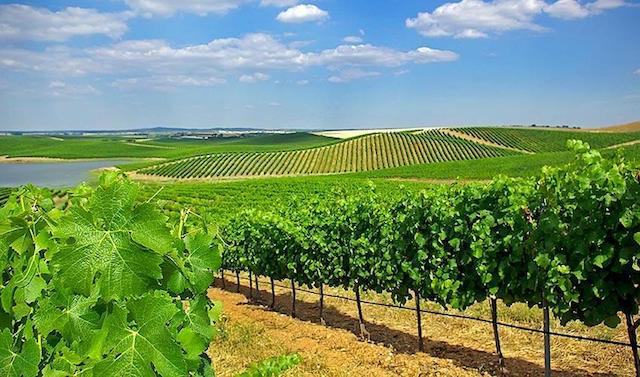
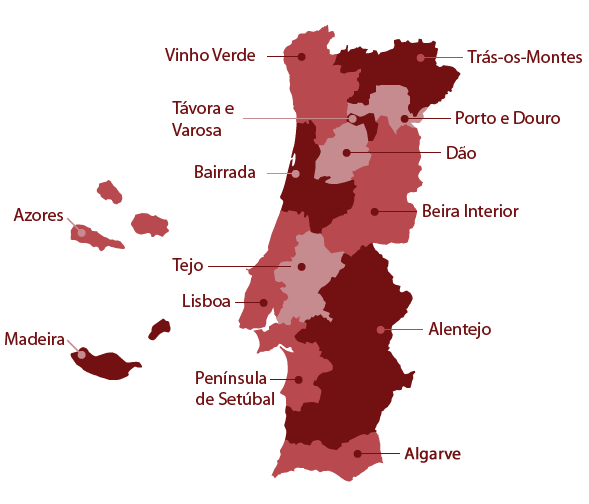
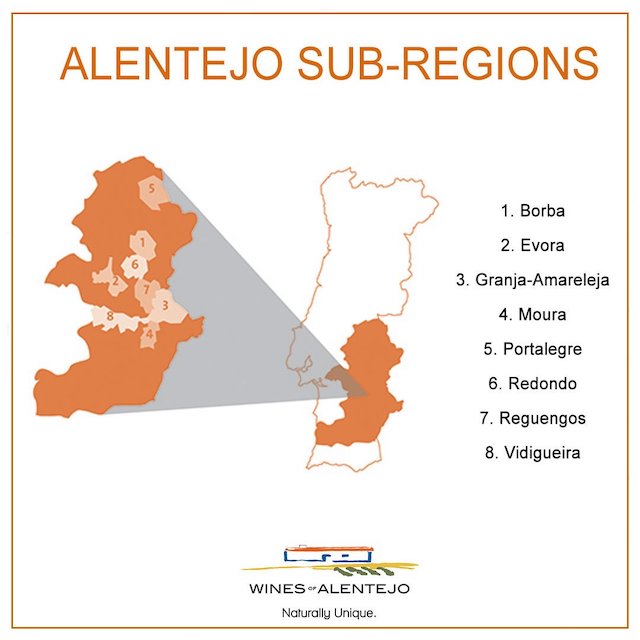
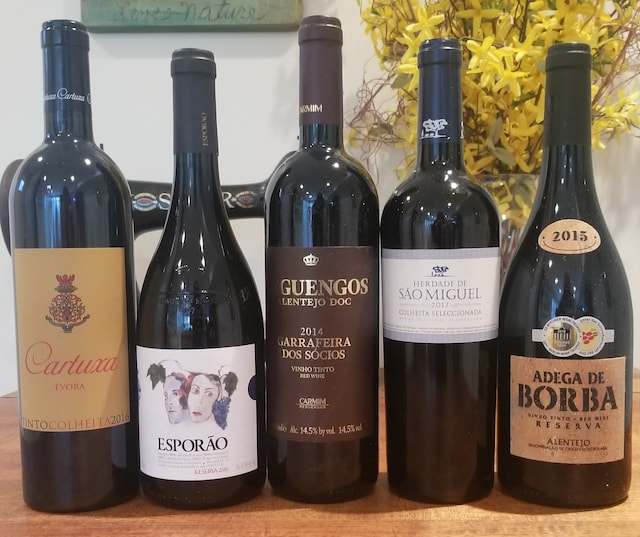
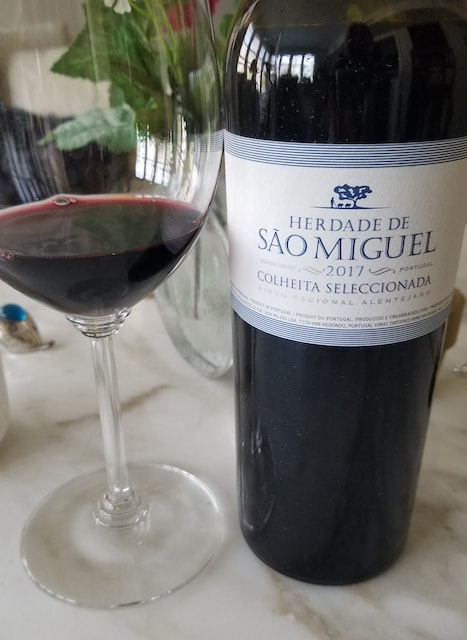
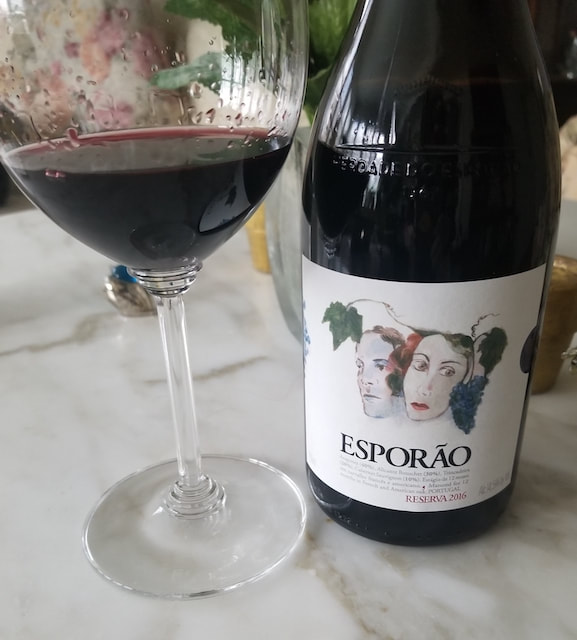
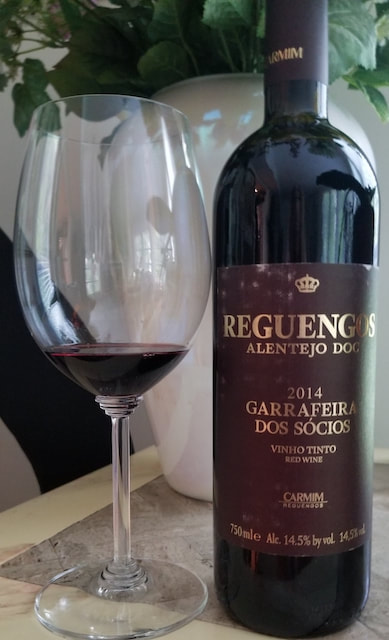
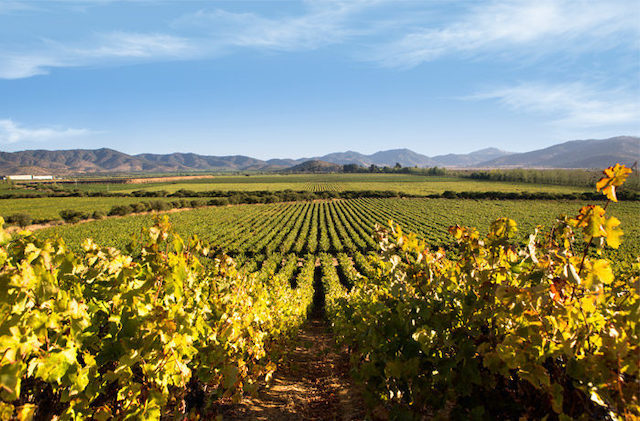
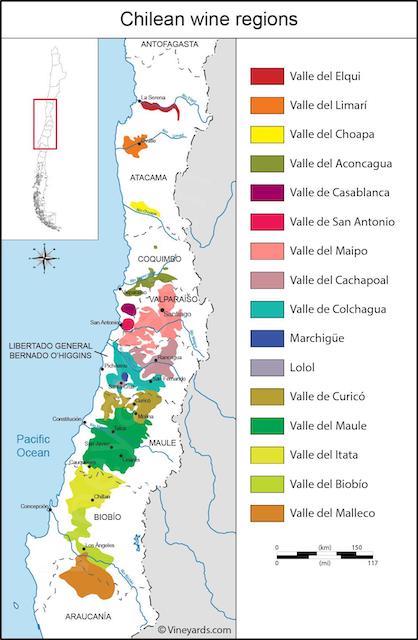
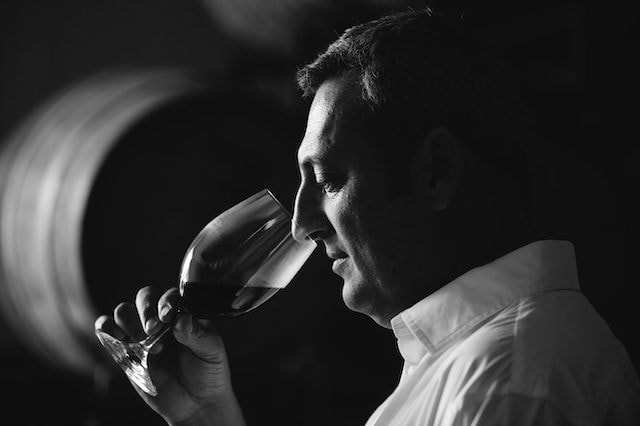
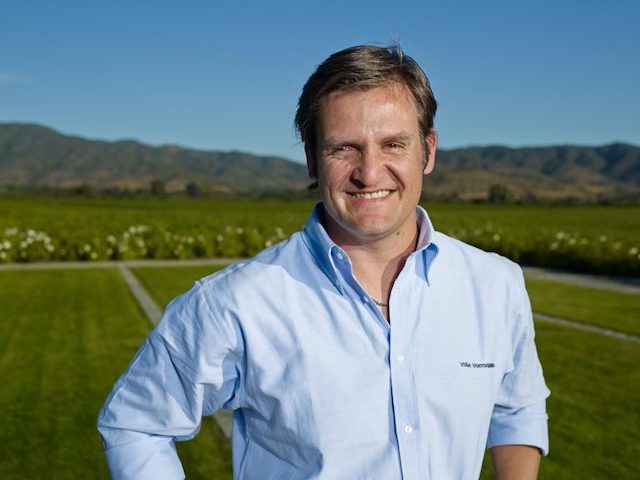
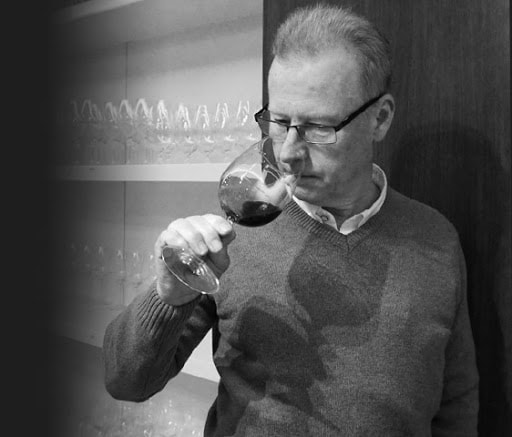
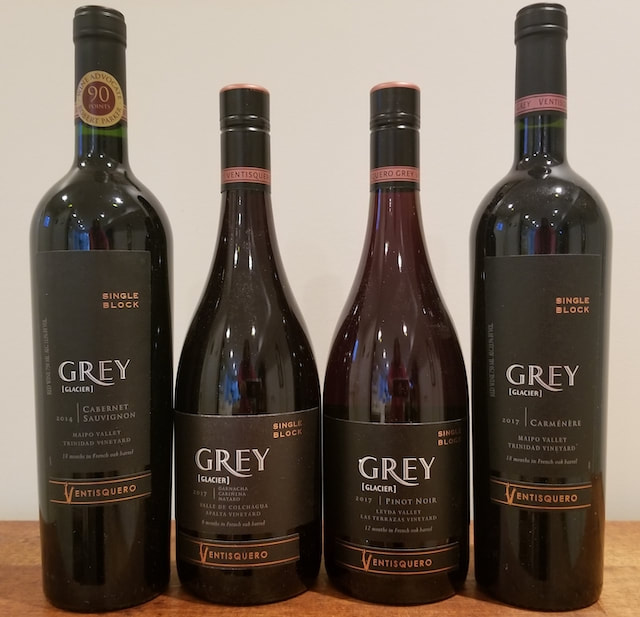
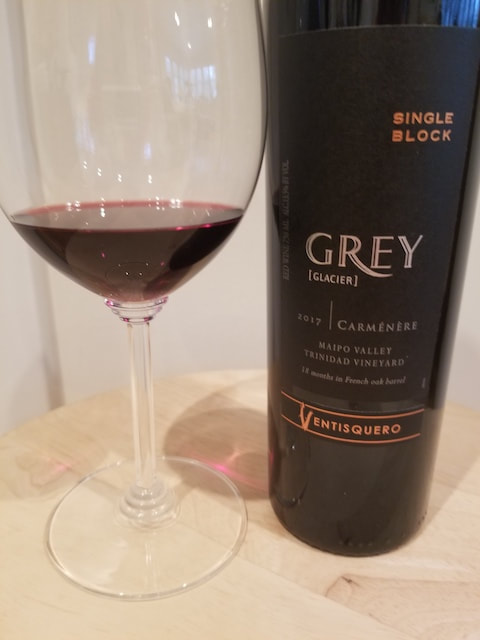
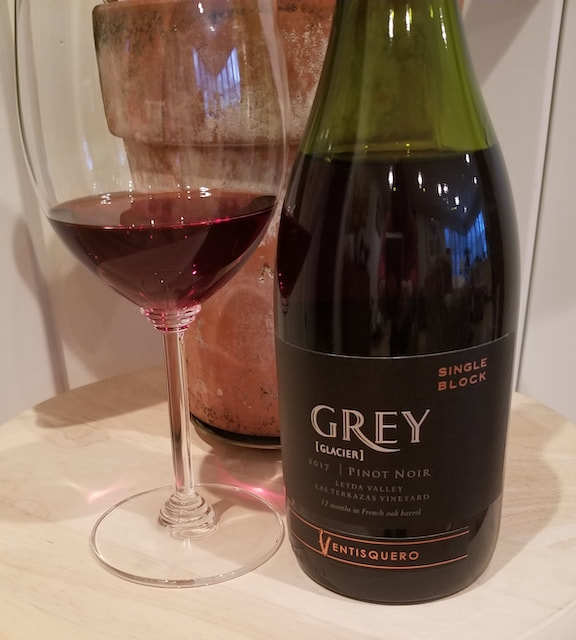
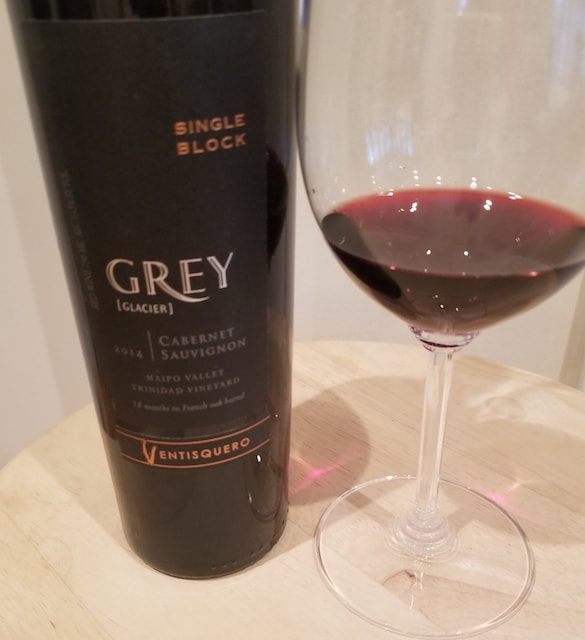
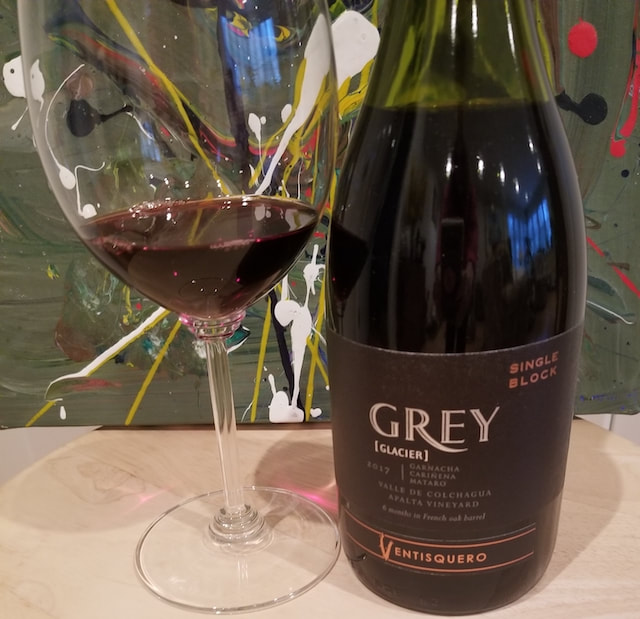
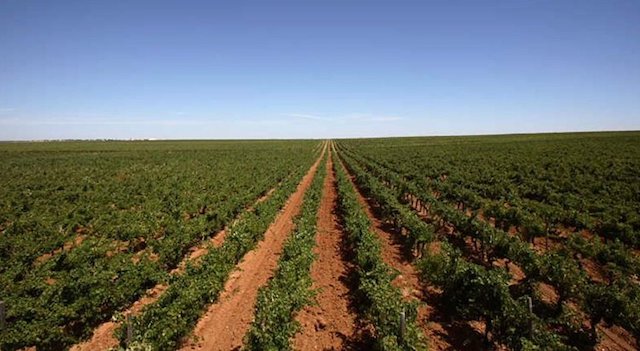
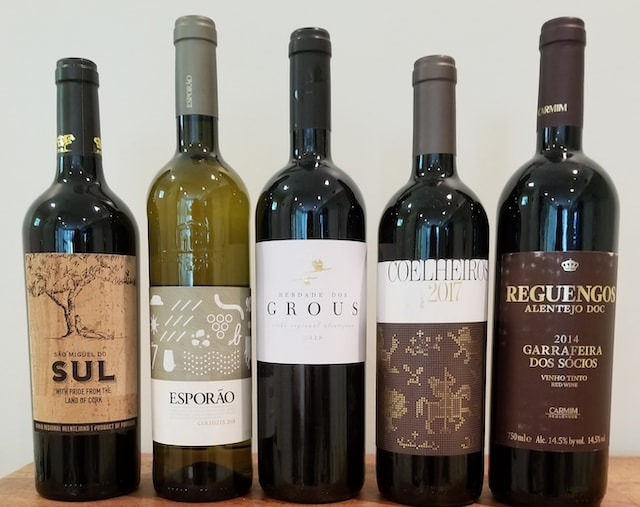
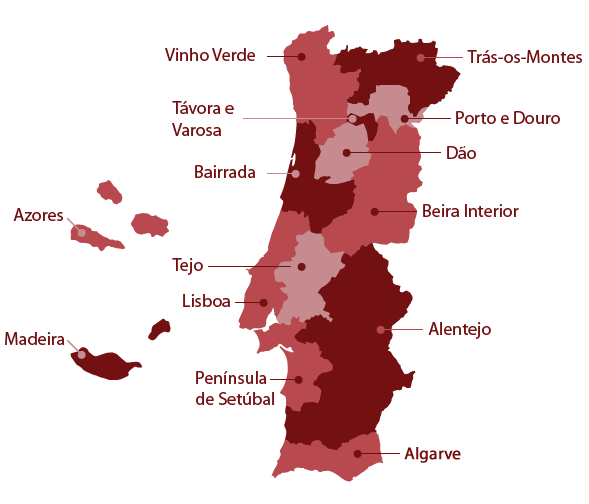
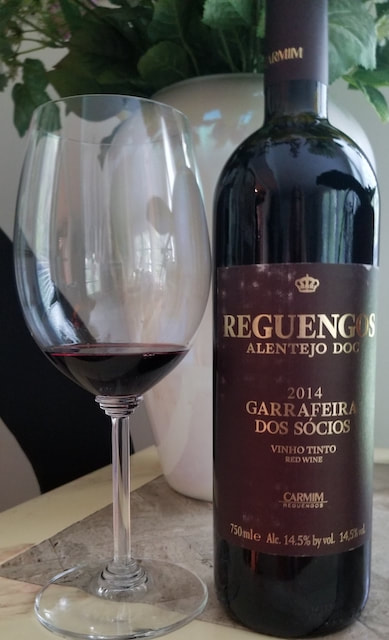
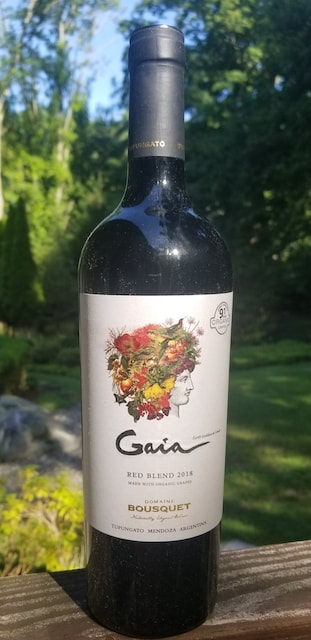
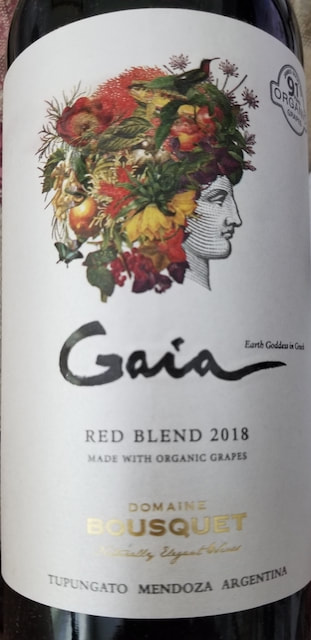
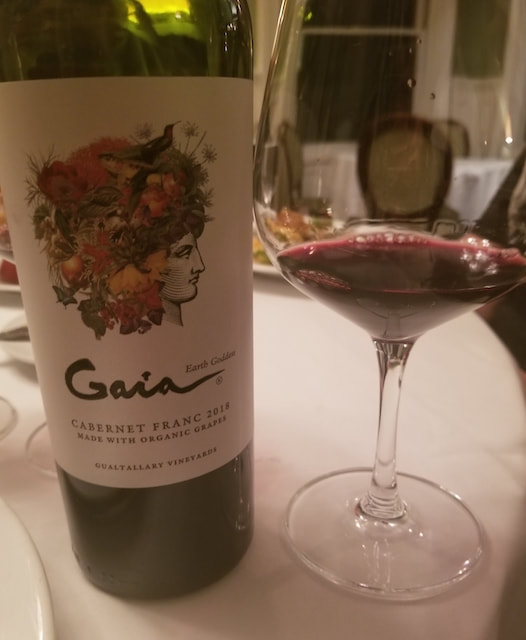
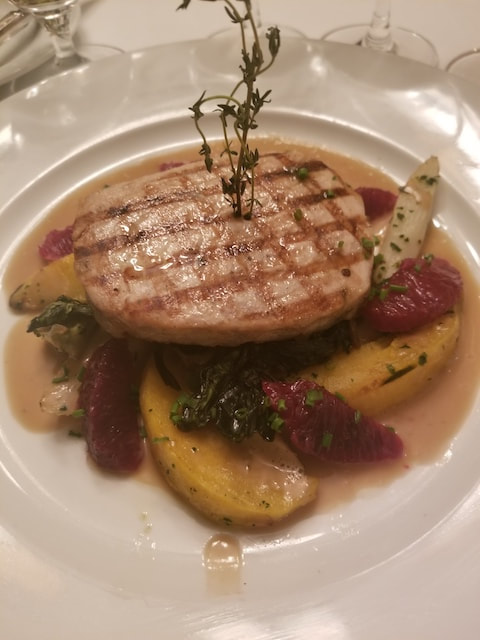
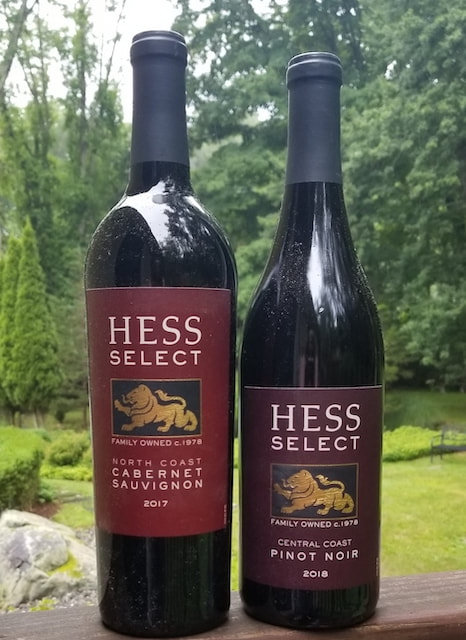
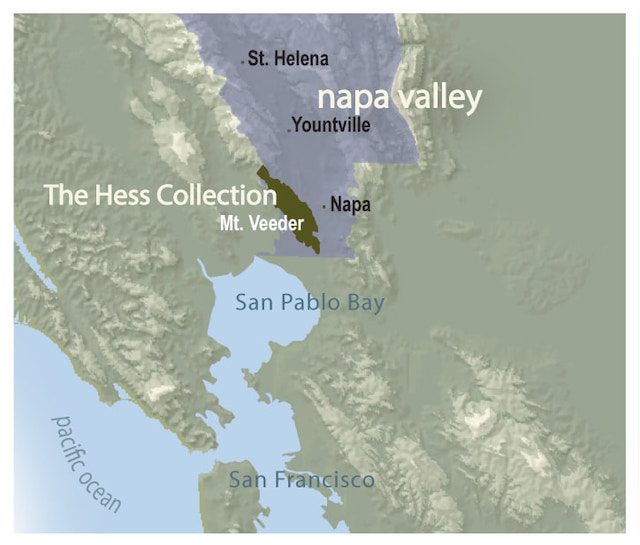
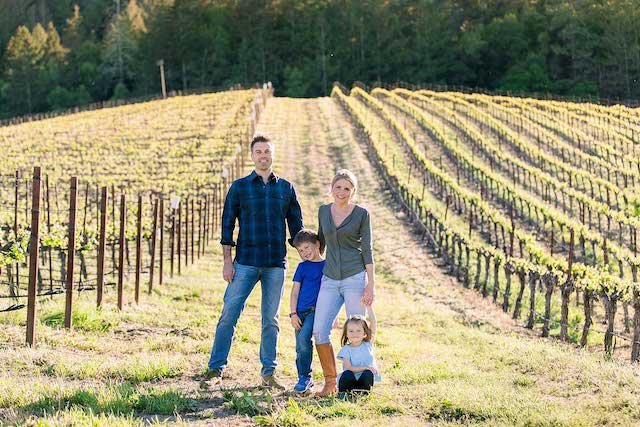
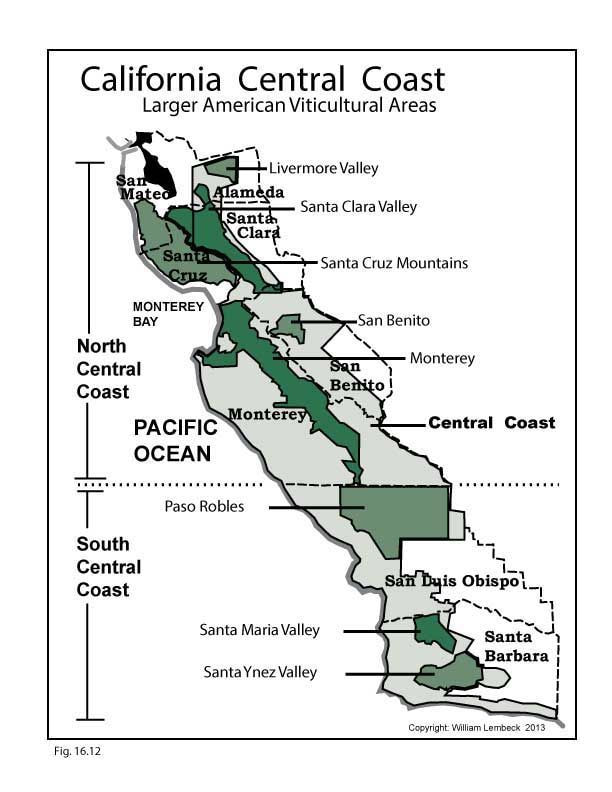
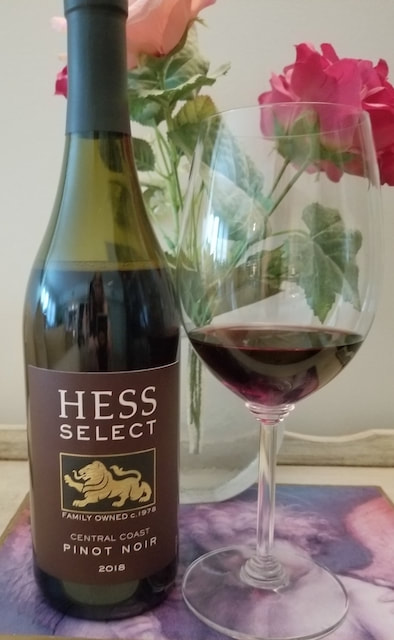
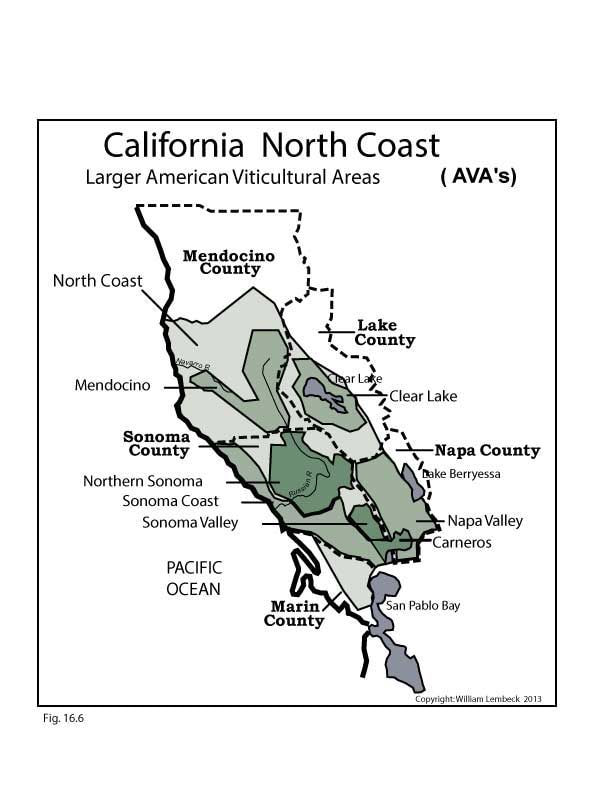
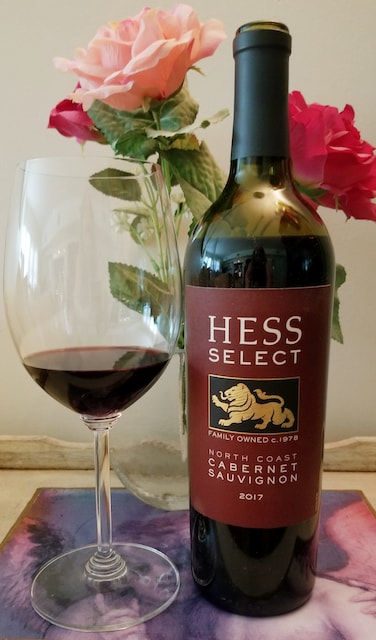

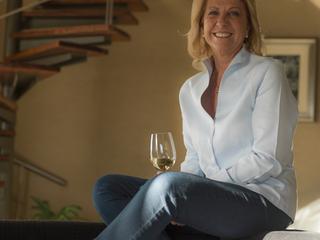
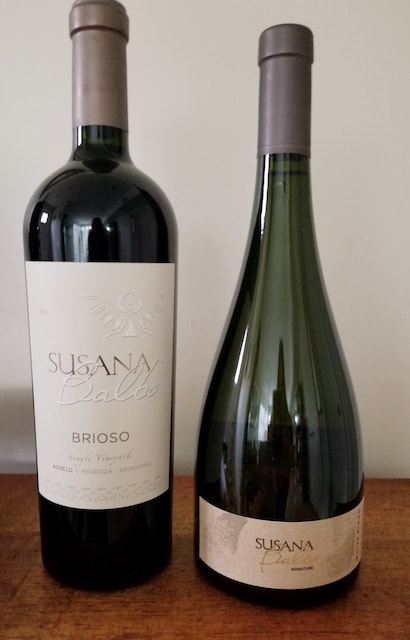
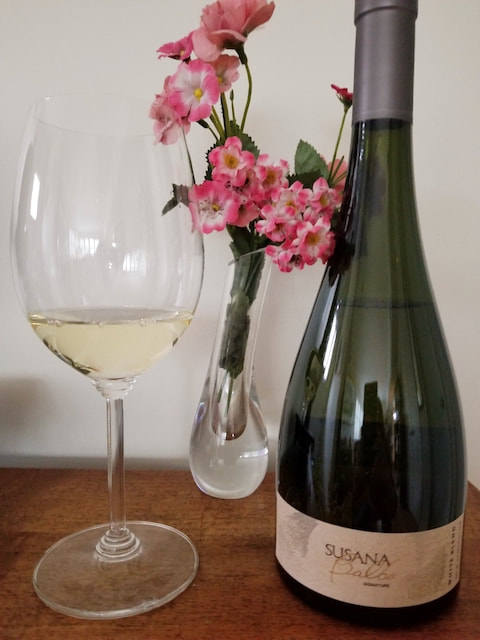
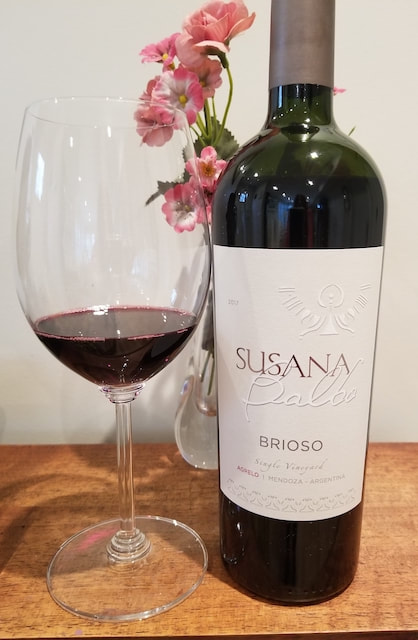
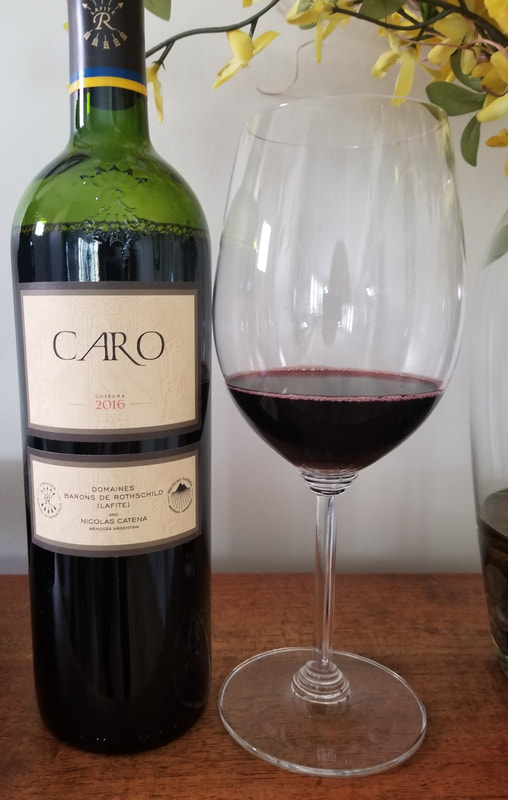
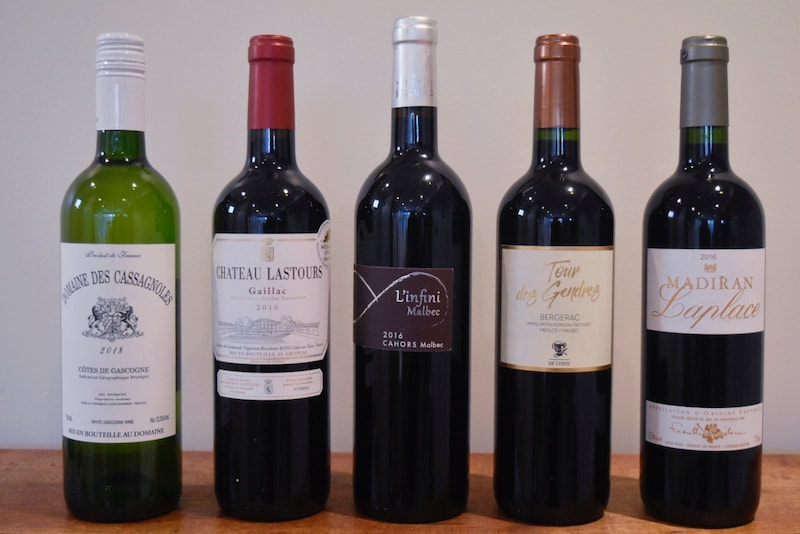
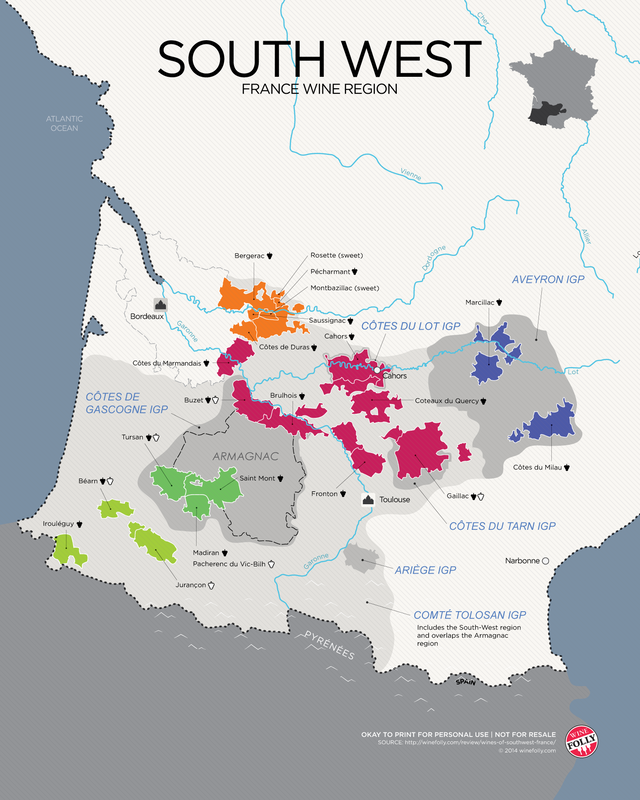
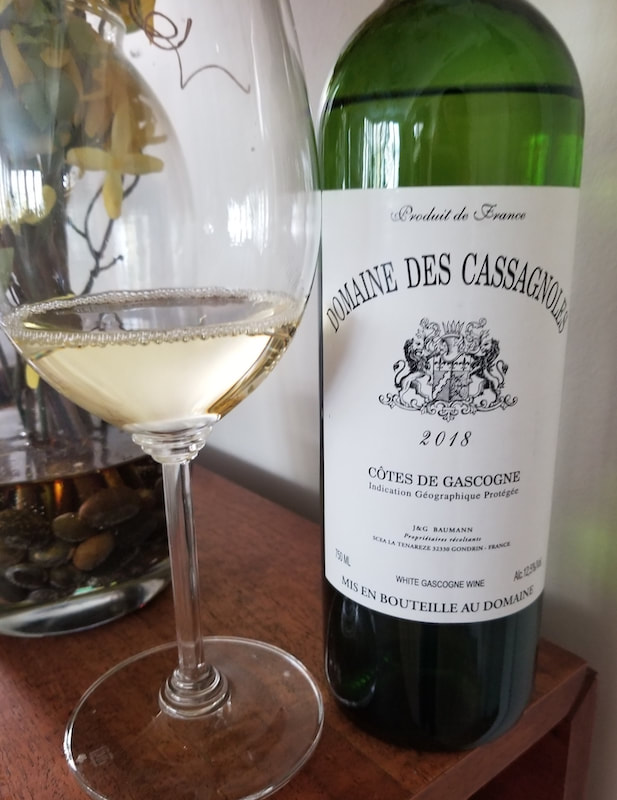
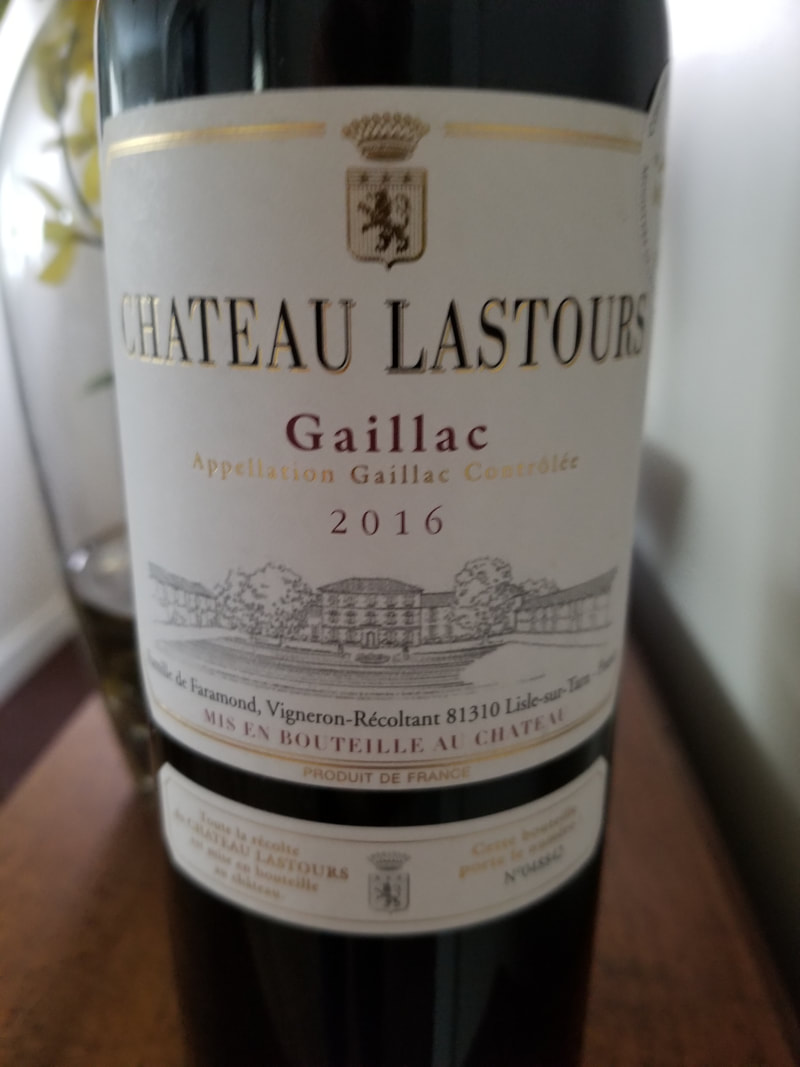
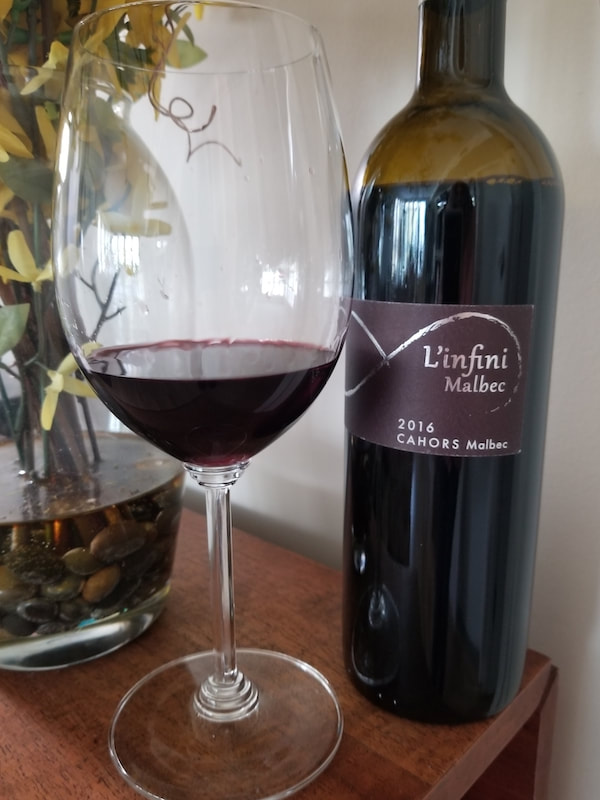
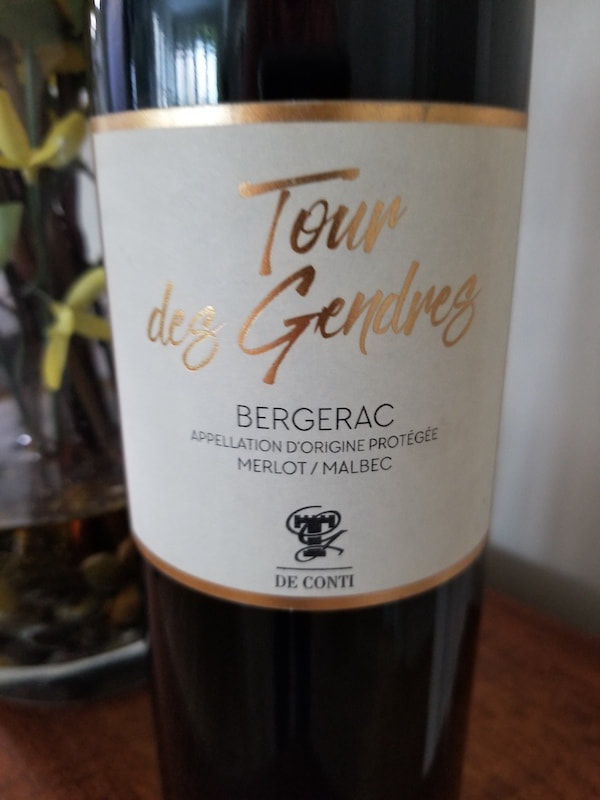
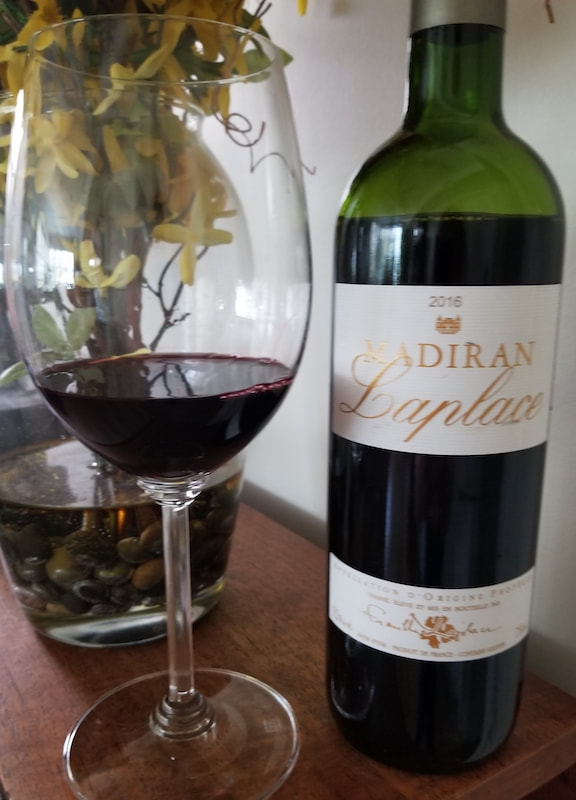
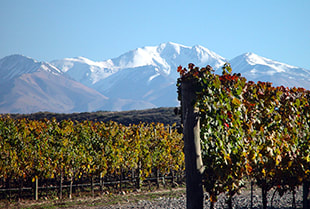
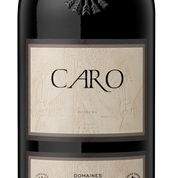
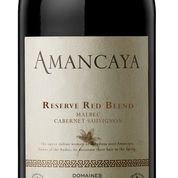
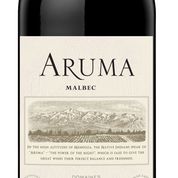
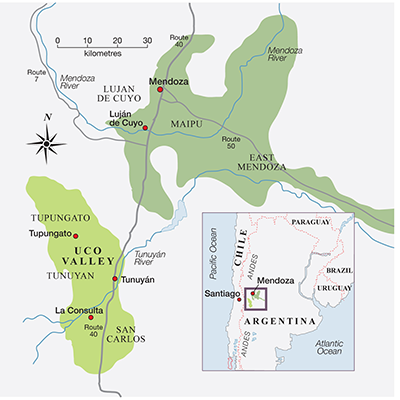
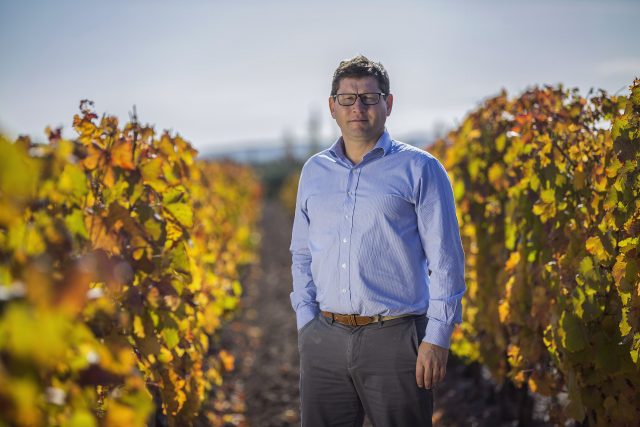
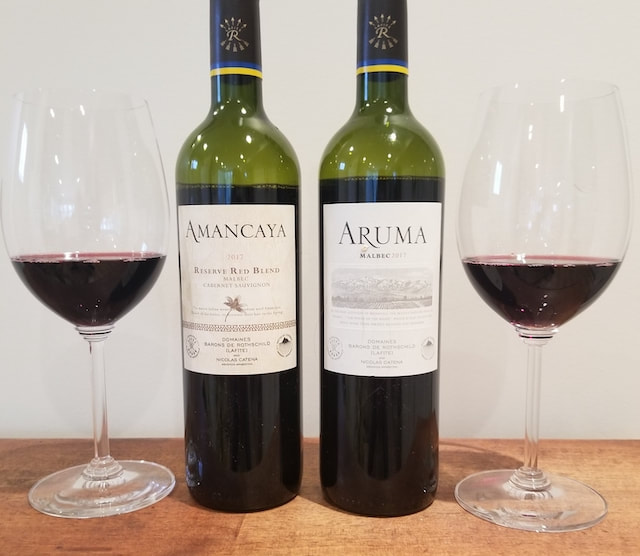
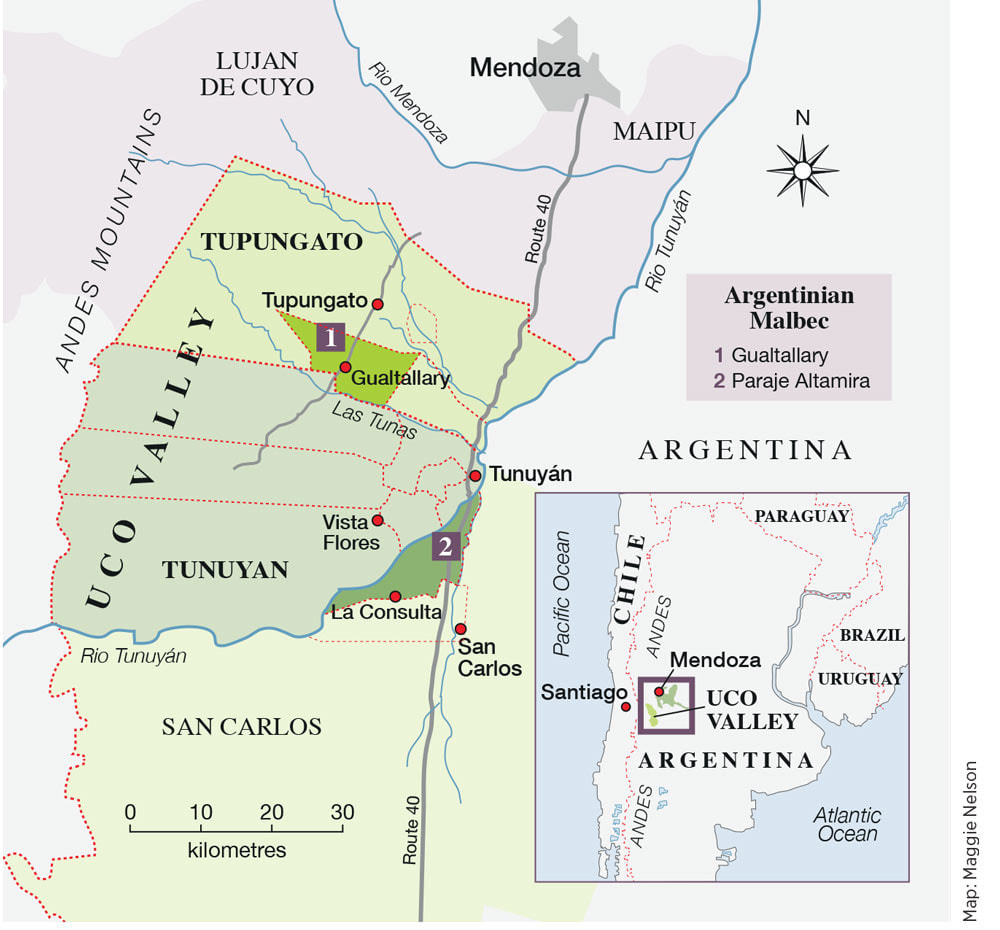
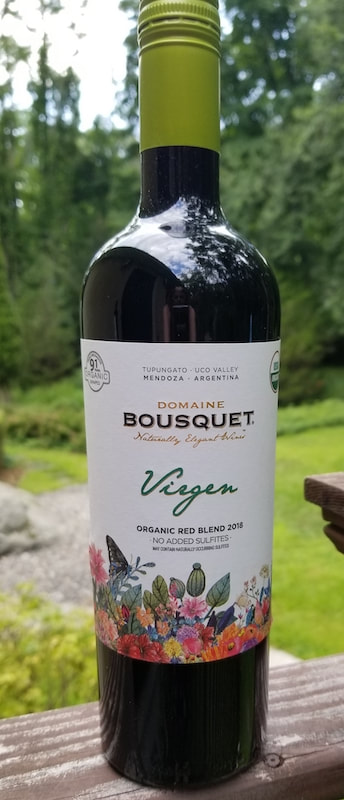
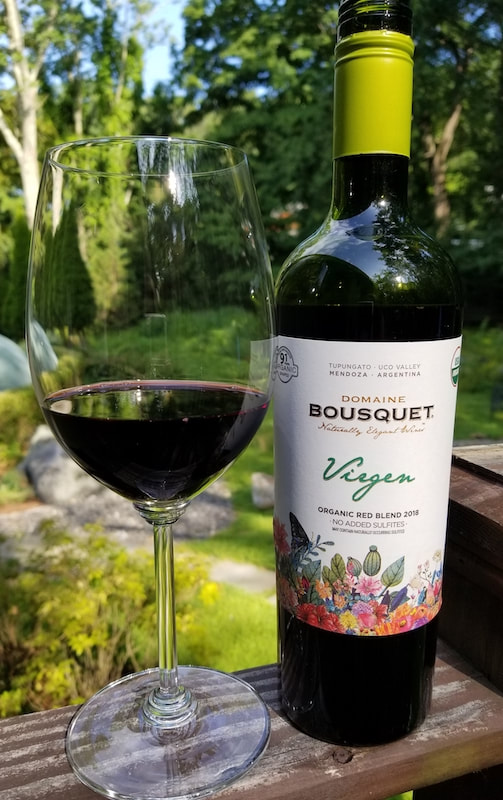
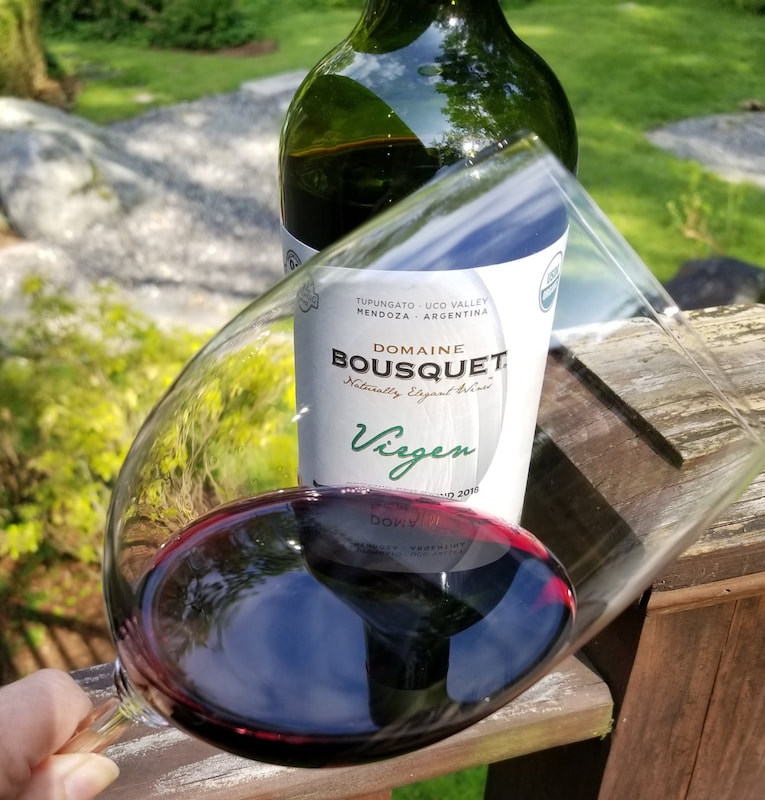
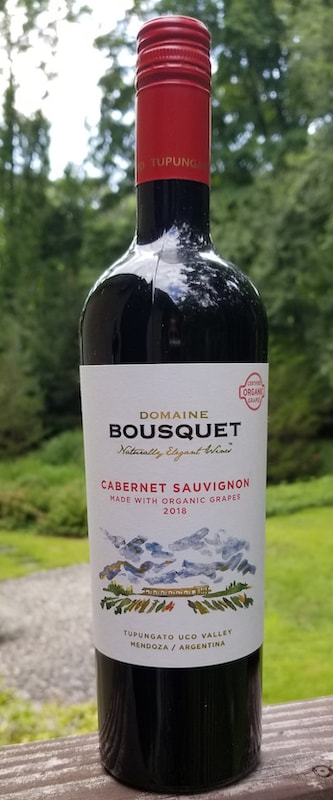
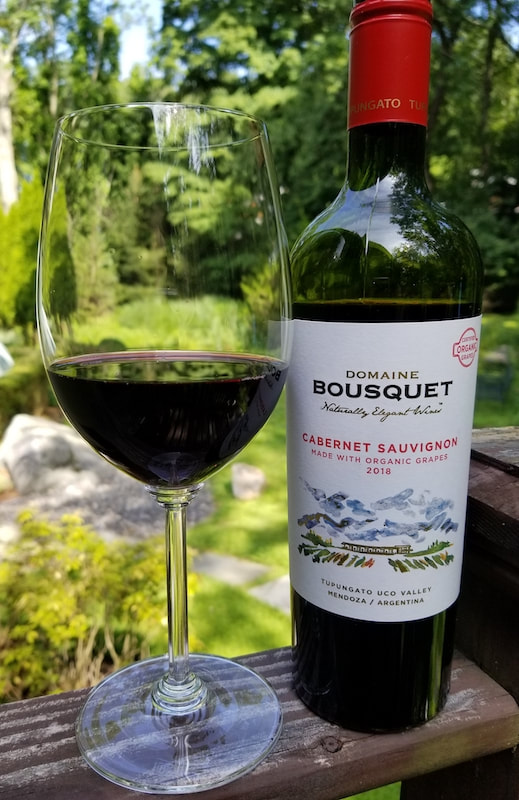
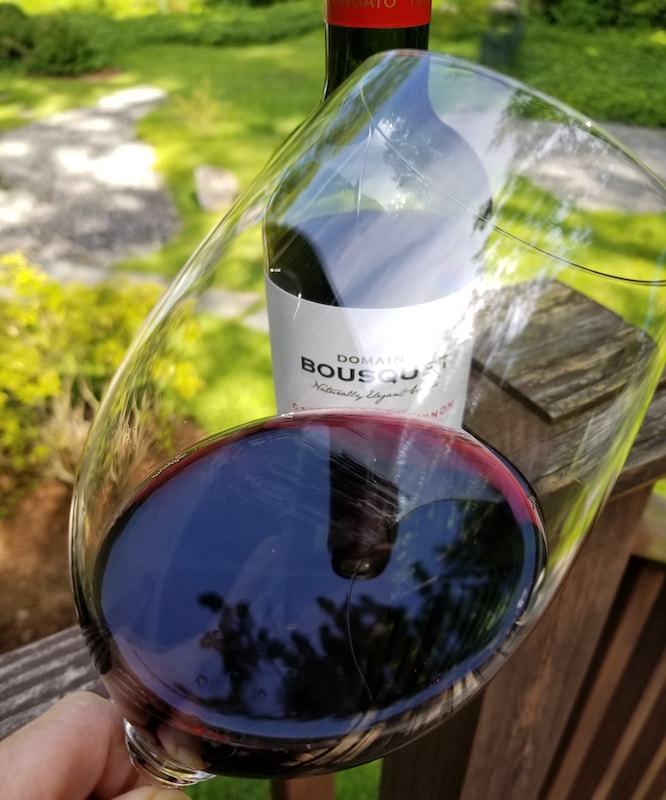
 RSS Feed
RSS Feed